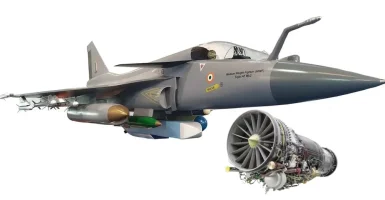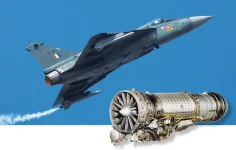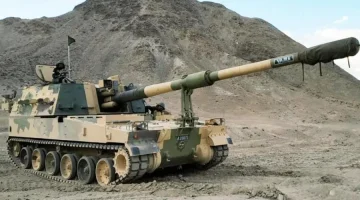- Views: 4K
- Replies: 31
A landmark agreement for Hindustan Aeronautics Limited (HAL) to manufacture advanced American jet engines in India is moving forward securely, with officials confirming that potential trade tariffs threatened by President Donald Trump will not disrupt the project.
The deal with GE Aerospace, considered vital for India's military aviation and self-reliance goals, is on track, with the first locally produced engines expected by mid-2028.
This significant manufacturing pact centres on the General Electric F414-INS6 turbofan engine, which will power the next generation of India's indigenous fighter jets.
The agreement includes an unprecedented 80% Transfer of Technology (ToT), a major step forward for India's goal of building its own defence technology.
This transfer will equip the Indian Air Force's (IAF) upcoming Tejas Mk−2 fighters and could also be adapted for future aircraft, including the developmental Advanced Medium Combat Aircraft (AMCA).
The F414 engine is a modern, high-performance powerplant that produces 98 kilonewtons of thrust, placing it at the heart of the Tejas Mk−2 program. This 4.5-generation aircraft is designed to significantly upgrade the IAF's combat fleet.
Valued at approximately $1 billion when the initial understanding was reached in 2023, the deal provides India with crucial manufacturing techniques. These include the production of single-crystal turbine blades and the use of special thermal barrier coatings, critical technologies that allow engine components to withstand extreme temperatures and stress, thereby boosting performance and durability.
Following extensive negotiations on pricing and technical scope, the agreement has cleared a major regulatory hurdle. In September 2024, the project received the mandatory DSP-83 certification from the U.S. government, which formally authorises the export of defence articles and technology.
With this approval in place, HAL is preparing to establish a new, dedicated production facility near Bangalore. The timeline indicates that manufacturing will commence within the next two years, with the first engines scheduled for delivery in the third year.
Initially, HAL will produce 99 F414 engines for the Tejas Mk−2 fleet, for which the IAF is expected to place an order of between 120 and 180 aircraft. These new jets will replace the ageing MiG-21s and operate alongside the IAF's existing Su−30MKI and Rafale fighters.
The deal is also scalable, allowing for continued production to support India’s ambitious fifth-generation AMCA stealth fighter, which is projected to enter service by 2035, and the Twin-Engine Deck-Based Fighter (TEDBF) planned for the Indian Navy.
Despite concerns arising from Mr. Trump's "tariff war" rhetoric targeting Indian goods, sources within the Indian defence establishment assert that the strategic nature of the engine deal insulates it from general trade disputes.
Defence collaborations, especially those under frameworks like the U.S.-India Defence Technology and Trade Initiative (DTTI), are governed by long-term strategic priorities rather than short-term economic policies. The recent U.S. government certification is seen as a strong signal of Washington's commitment to the partnership.
The resilience of the agreement is further bolstered by the deep strategic alignment between India and the United States, particularly their shared interest in maintaining stability in the Indo-Pacific region.
GE Aerospace also has a long and successful history of collaboration with India, having previously supplied the F404 engines that power the first generation of Tejas Mk1 aircraft, creating a solid foundation of trust and technical cooperation for this new venture.



